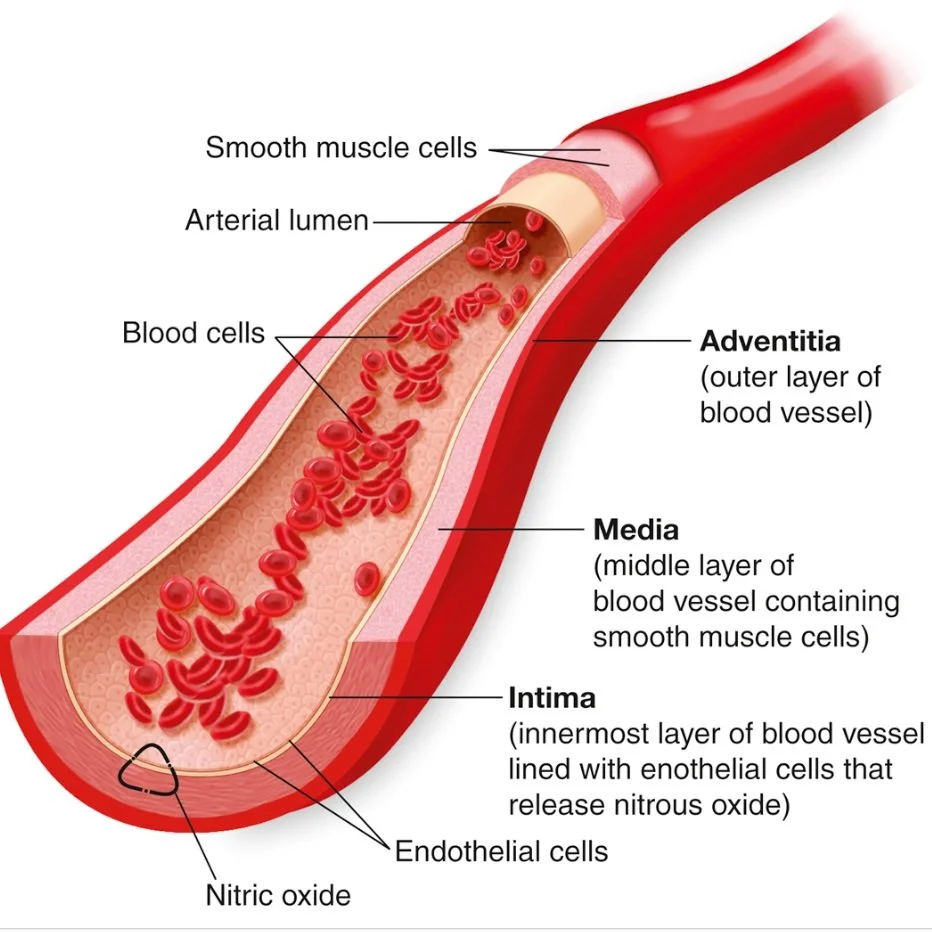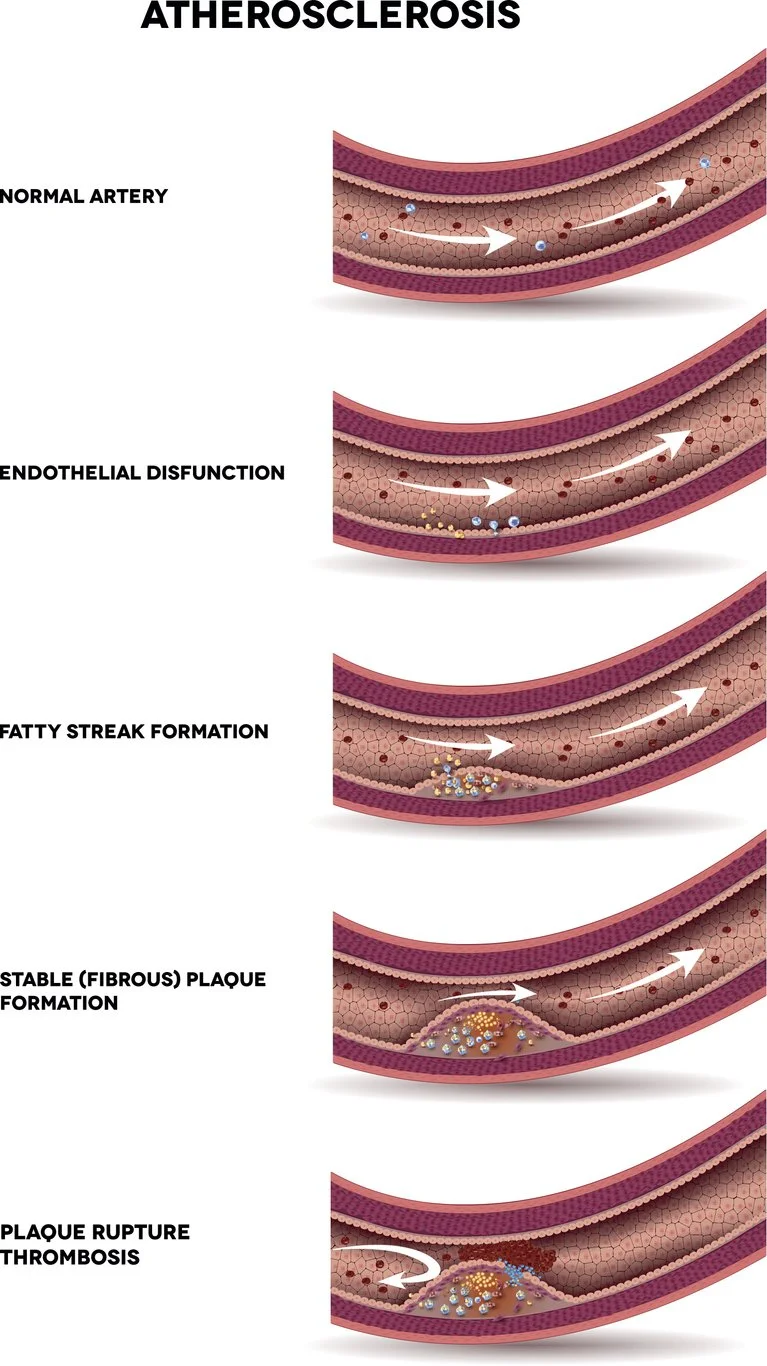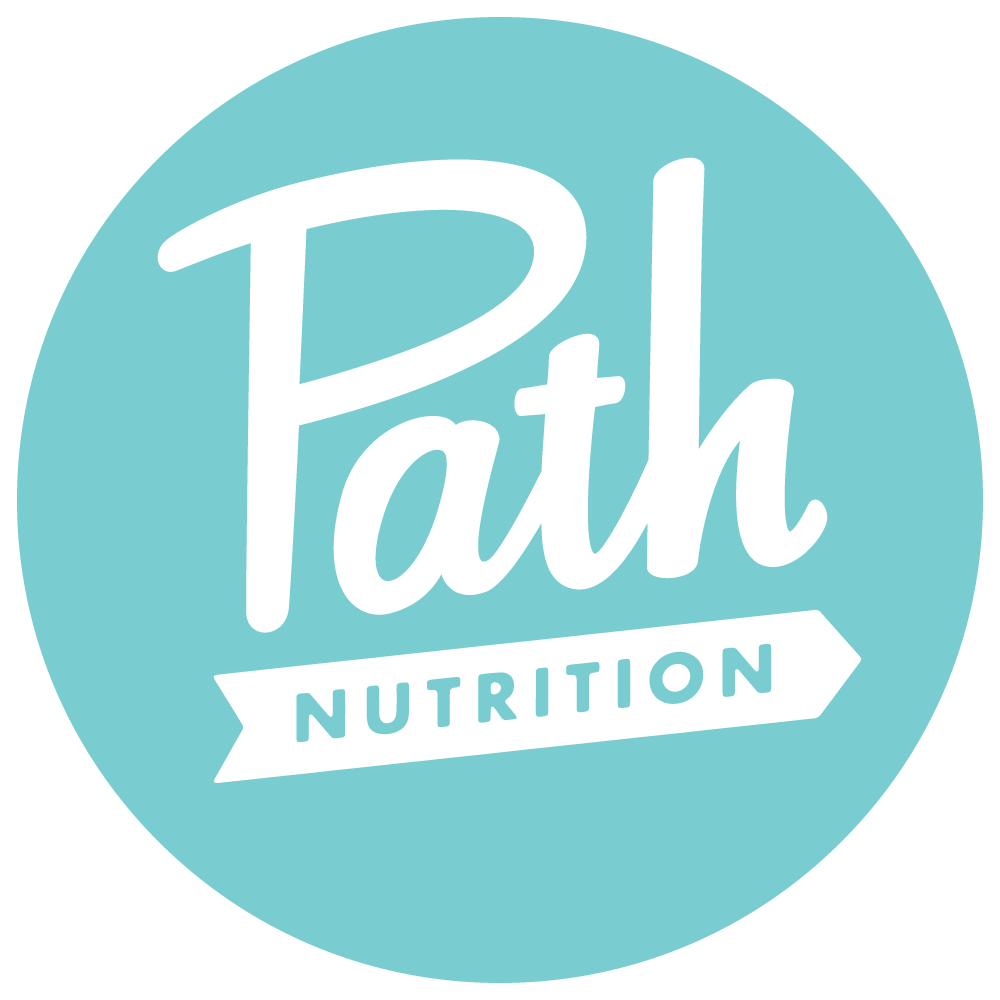Clogged Arteries 101 and How to Prevent Them
Clogged arteries aka plaque, aka atherosclerosis is where we are picking up after we learned all about cholesterol in the last blog post. Cholesterol is the basis of what builds up in the arteries. This build up narrows the tube (artery) that carries oxygenated blood from from the heart and through the body.
Often, the cholesterol build up will be in one or more small areas of the artery. The initial area of cholesterol build up can expand in length along the artery but it’s not like there is a gradual evenly distributed cholesterol build up along the whole tube.
Atherosclerosis is not just a process that happens in the heart, this plague build up can happen in the arteries to the kidneys, in the abdomen, the larger artery in your neck that goes to your brain, and in the legs.
The artery is made up of various layers. Under normal conditions blood is pumped via the heart through the arteries. Besides red blood cells there are other components flowing along, one being LDL cholesterol (LDLipoproteins).
The key thing I want to focus on is the endothelial layer. This single layer of cells that line the artery is the largest endocrine organ in the body. Its surface area is equivalent to almost 3 basketball courts! The endothelial layer functions as a barrier and senses the changes in the blood stream. The integrity of this layer of cells is the cornerstone of health for the cardiovascular system.
A friendly reminder from Cholesterol 101 - there are receptors within the endothelial cells waiting for LDL to come drop off its goods. But if there’s a mis-step in the normal processes of the endothelial lining or lipoproteins there can be a build up between the endothelial cells and the middle muscle layer. Thus the clogged artery.
What Causes Atherosclerosis?
Atherosclerosis is a reaction to injury and inflammation within the inner layer of the artery. As a result this layer has lost the ability to maintain proper function and structure. With this loss of function there is the build up lipoproteins, calcium, immune cells, and other cellular components.
Dr. Mark Houston refers to atherosclerosis as one outcome to many assaults.
The most common assaults on the cardiovascular system:
High blood pressure
High amounts of cholesterol especially small dense LDL and/or Lp(a)
Loss of nitric oxide in the artery (helps with dilation of the arteries)
High blood sugar
Smoking
Chronic Stress
Bacteria infections and periodontal disease
Changes in hormones (e.g. perimenopause/menopause)
Environmental Toxins
Aging
Genetics
Without intervention the plague continues to build making it harder and harder for blood to flow through, a rupture may occur which then recruits more immune cells to clean up the mess which creates a blood clot. From here this is where a heart attack or a stroke can occur.
How to Prevent Atherosclerosis
I know it seems like it’s been all doom and gloom learning about heart disease, but there really are very effective interventions to prevent or slow the progression of plague build up in the arteries.
In no particular order here are some top things you can do for your heart health.
Have good oral care, get regular cleanings. Plaque on the teeth includes bacteria and the natural life cycle of bacteria produces toxins. The blood rich gums absorb the toxins which sets off an inflammatory process that effects the body including the arteries.
Get regular movement - like walking, taking the stairs where possible, getting up during meetings, vigorous activities like weight lifting, jogging, biking, etc. Start small and work your way up.
Manage stress. We can’t all just get rid of stress, but we can build resilience to our daily stressors. Box breathing, mediation, being in nature, doing activities that you enjoy, laughing, calling your bestie…. You get the idea. You need to find what works for you. Know that stress is normal, but we can only handle so much and we need to have a release valve.
Get sleep. Getting enough deep sleep helps to restore our body. When we are lacking in sleep and not getting the restoration our stress hormones go up which increases blood sugar, and even cravings for foods that elevate blood sugar more. It’s a cycle that you want to avoid.
If you smoke, please quit. You’ve heard it all before, no need to beat a dead horse.
Get regular screenings - know your true risk. Do not settle for a standard cholesterol panel. Demand to know what your small dense LDL and Lp(a) numbers are. Keep a document of your blood pressure, so you can track changes over time. Blood pressure can be effected by stress, diet, exercise, smoking.
Food and nutrition… more on this in the next post!
Here are a couple meditations that help get you into the relaxation zone!
Use this music to get you grounded for a bit. Put in your headphones, close your eyes and don’t think about your to-do list for a few minutes. Maybe you’ll doze off for a minute.
If you are perfectly spicy and in need of a little less hippy meditation - this is the one for you! There’s a meditation for everyone, even us crass folk. (Not appropriate for kids ears).







